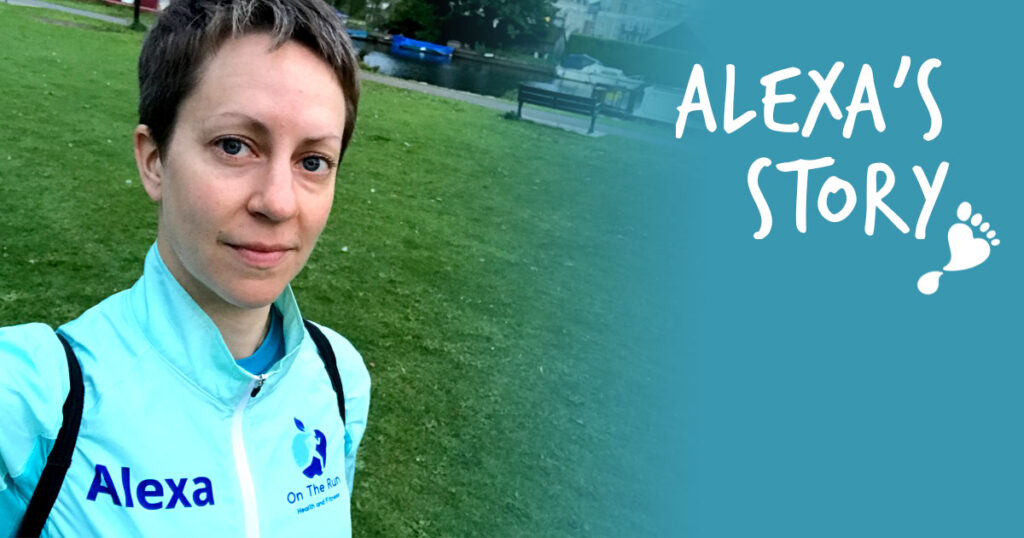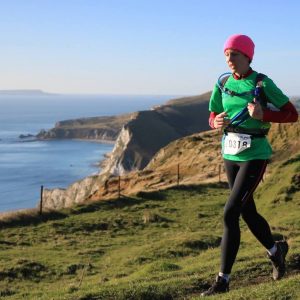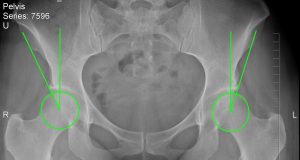
“I’m 36 years old and first experience hip pain at the age of 20. I clearly remember that my left hip made clunking noises from much earlier than that.
I wasn’t that active as a child, I enjoying swimming but I didn’t really excel at school sports. It was when I left school and started university that I found running, an escape from the stress of exams. I really enjoyed the buzz of exercise and the joy of being outside. Running was still an occasional pastime when I first went to a specialist about hip pain, being brushed off and told I shouldn’t wear high heels and should do more exercise…
In my mid 20s my passion for running grew, I also went to strength classes and started cycling. The hips felt better and I started training for races, my first 10k and half marathon and then my first full marathon in 2010. I’d got hooked, not only was I enjoying my own running but I started a run group at the office I worked at and started gaining my coaching qualifications and volunteering as a coach at my local running club. It’s incredibly rewarding to help others progress in a sport you love.
In my early 30s my running had progressed onto longer distance events, ultra marathons! I found I was getting lots of varied niggles all on my left leg and all connected to lack of stability in that leg. I say many physios and talked to my GP at various points, running was always blamed. A running analysis and a specialist physio eventually found that my glute muscles controlling the movement of my left leg in my hip socket were not firing correctly and were weak. I had a programme of strengthening to do, which helped a little but I could never get the legs to work equally.
Eventually in 2015 I was running in a 24 hour event. at around 16 hours in my left hip completely solidified and I couldn’t lift my leg at all, it wasn’t painful it just wouldn’t move! Two days later it felt fine but I went to get a referral to a specialist just in case. They diagnose Femoral Acetabular Impingement, where the thigh bones rubs into the hip socket as a bone growth has appeared which can damage the joint. I had surgery later that year to get that fixed.
My rehab and return to activity went well for the first 6-12 months. During this time I embarked on a career change. I’d been training to become a Sports Massage Therapist and left permanent work to set up my own business doing sports massage and running coaching work, a real dream come true!
Sadly after then the hip started to get progressively worse. My surgeon was baffled, my physio was baffled. Both said I couldn’t run any more which I found hard to deal with. Eventually I got a referral to another specialist in 2018. At this point it had started to impact other areas of life; I could not longer cycle, prolonged sitting was painful, complex movements like getting in and out of the car hurt. This specialist spotted that my hip sockets were too shallow, and diagnose hip dysplasia. I went home a little in shock and this is the point I started googling and luckily found the Steps website which has lots of information on Adult Hip Dysplasia!
The book on Adult Hip Dysplasia recommended by Steps is an absolutely life saver, it contains so much information and shares stories of other adults with the condition. It’s alarming that most of the google results of the condition turn up results about dysplasia in dogs, and more of the information about humans is for those diagnosed as children. It’s so important to get information specific to your condition as well as pointers about where to find more help. Social media has helped me connect with other with the condition both pre and post surgical treatment.
I’m currently awaiting surgery to preserve my hip joint, this is major surgery with a long recovery time to adjust the position of my hip socket in my pelvis and hopefully extend the life of my current hip. It’s pretty scary but the information provided on the condition and surgery success rates have been helpful to make informed decisions on whether to go ahead.
My poor right hip has been taking a lot of strain for some years now and also has dysplasia, but slightly less seriously than my left hip. So the next part of the story may involve treatment to preserve that joint too.
I’m passionate about raising the awareness of adult hip dysplasia, particularly people in the medical profession. If I’d been diagnosed earlier it would have been hugely helpful!”


